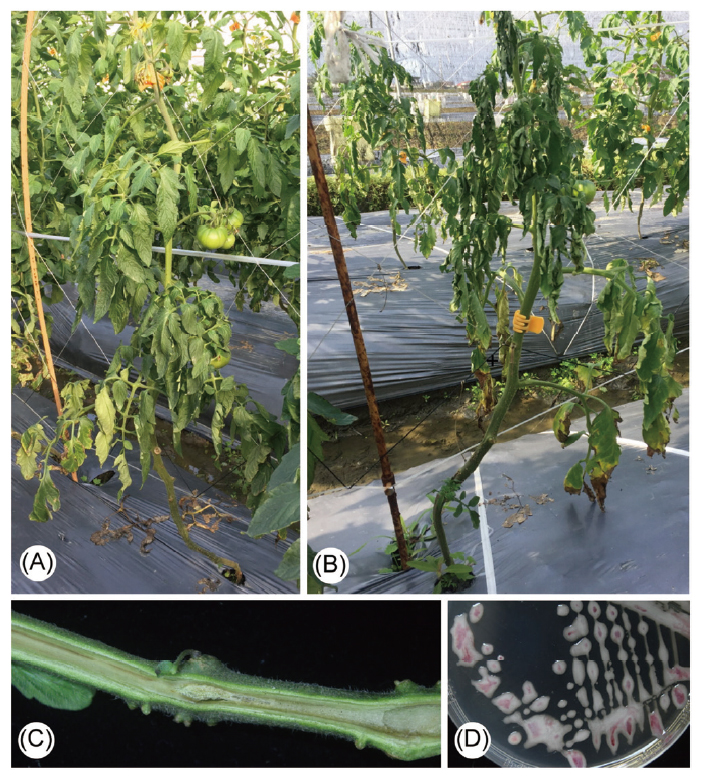All issues

Author:Chia-Hsin Tsai*, Shu-Ling Hwang, Jia-Rong Li, Ching-Yi Lin, and Yun-Sheng Lu
Abstract:
During 2016–2017, growth decline and wilt were observed in a number of tomato plants in a tomato planting field in Yilan County. The leaves of the wilt tomato plants remained greenish, similar to the symptoms of the bacterial wilt. The stems of the diseased tomato were cut open, and the vascular tissues were found browning in appearance. The bacteria colonies isolated from the diseased stems were fluidal, white with pink center on triphenyl tetrazolium chloride medium. Based on physiological and biochemical properties, Biolog identification system, 16S rDNA sequence analysis and specific primer pair, the bacteria were identified as Ralstonia solanacearum. The bacteria were further classified as race 1/biovar 1/phylotype II/sequevar 7 by the host range, biovar test, phylotype multiplex polymerase chain reaction and phylogenetic analysis. In Koch’s postulates, the inoculated tomato plants developed wilt symptoms as those observed in the field, and the same bacteria were re-isolated from symptomatic plants. This is the first report of R. solanacearum race 1/biovar 1/phylotype II/sequevar 7 causing tomato bacterial wilt in Taiwan.
Key words:Ralstonia solanacearum, Race 1, Biovar 1, Phylotype II, Sequevar 7
Download:![]() PDF Links
PDF Links
- 1. Using Digital Soil Mapping to Predict Soil Organic Carbon Stocks in Zhuoshui River Basin
- 2. Development of a Technique for Forecasting (or Pre-Detection) Anthracnose Disease Incidences of Green Mature Bagging Mango Fruits
- 3. Taxonomic Review of the Genus Asiophrida Medvedev, 1999 in Taiwan (Insecta: Coleoptera: Chrysomelidae: Galerucinae: Alticini), with Notes on Biology
 Submit your manuscript
Submit your manuscript
 Guide for authors
Guide for authors